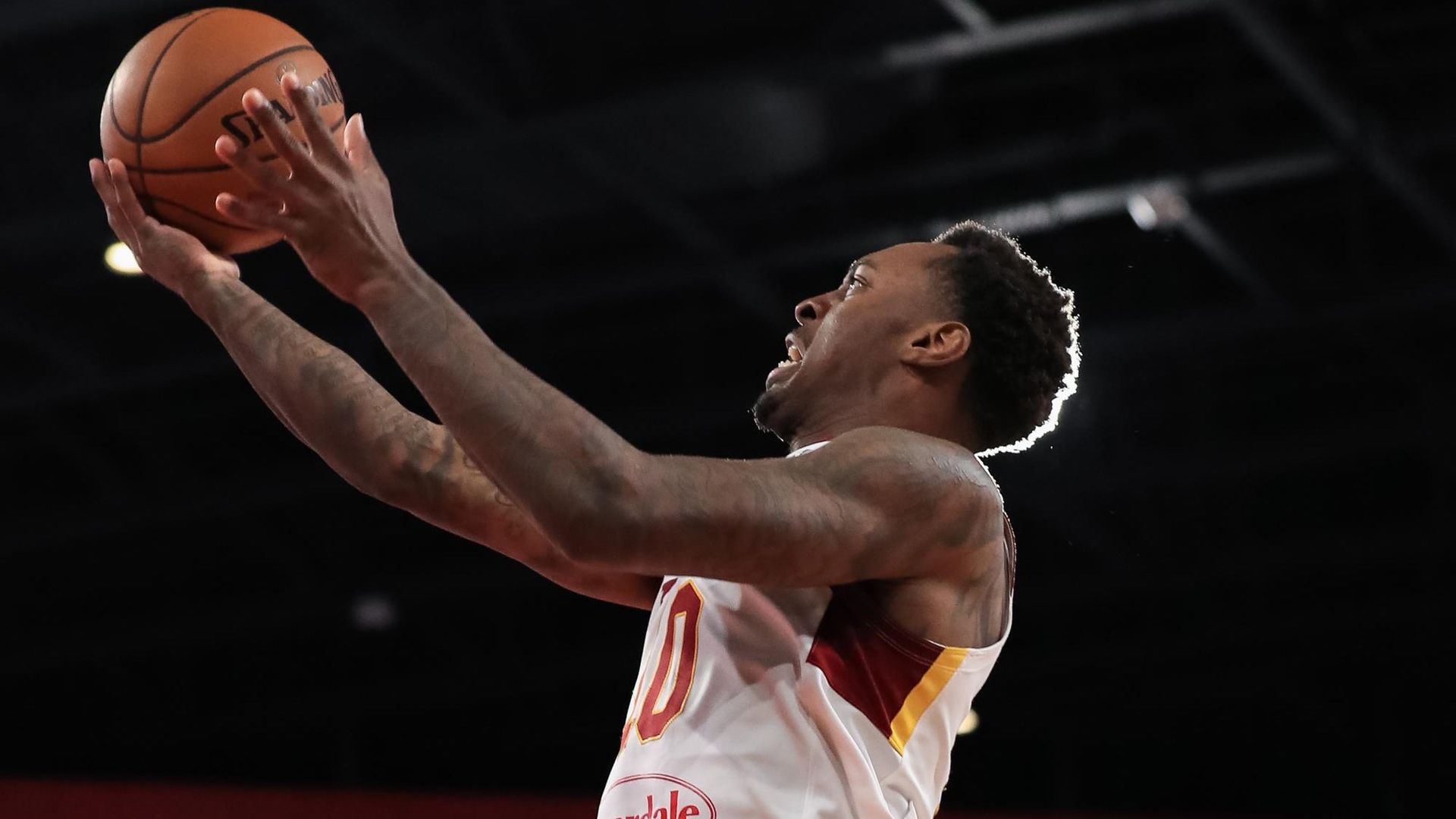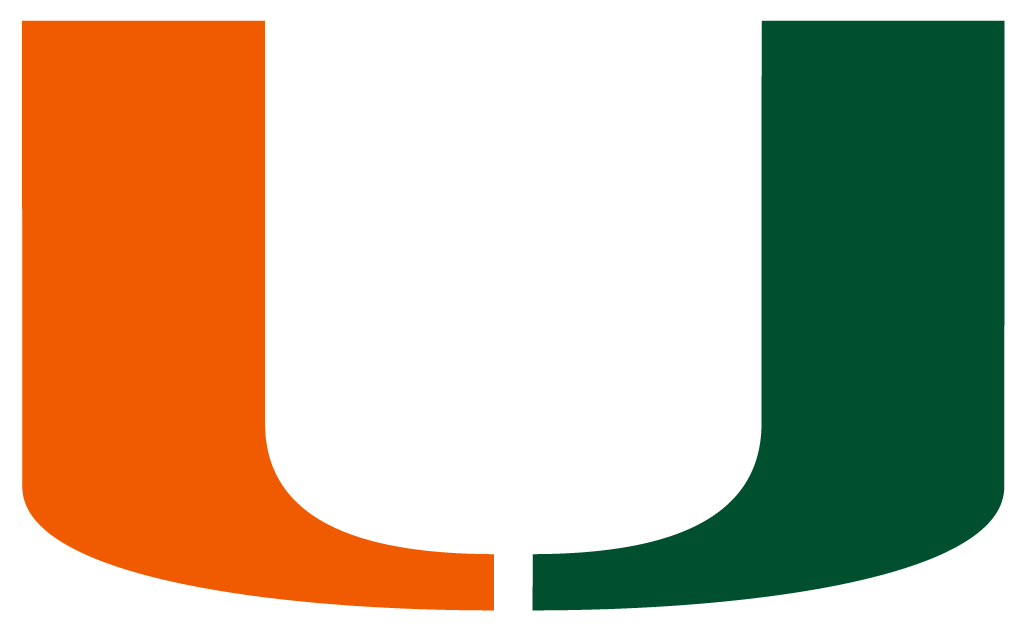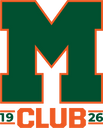
Return of the Mac
By Alex Schwartz
HurricaneSports.com
Exactly 29 months to the day after suffering what he was told was one of the worst Achilles tears in NBA history, Sheldon Mac was back.
The road from Oct. 8, 2017, when Mac got hurt in a preseason game with the Washington Wizards to March 8, 2020, when he got news of his call-up to the Cleveland Cavaliers on a 10-day contract, was anything but easy.
“The journey I went through, it was crazy, and it just shows my strength, my faith, my will to never give up and my work ethic,” said Mac, whose season, like that of every other NBA player, is on pause due to the COVID-19 pandemic. “So, that’s what I mainly want everybody to know because not a lot of people know what I went through just to, not [only get back to] playing basketball, but just to be able to walk again because, for a time, I wasn’t even able to walk.”
It was nearly five months that Mac, who went by McClellan during his standout playing days at the University of Miami, was unable to walk without assistance. He had multiple tears in his left Achilles and, after playing in 30 NBA games with the Wizards as a rookie in 2016-17, his career was put on hold.
His initial reaction to the news was, understandably, to head to the locker room and cry in the shower—while sitting in a chair, of course, since he could not even stand.
“My mindset was kind of all over the place, honestly. Very emotional, kind of discouraged because I felt like I was just getting into my rhythm,” Mac said. “I felt like I had that position right behind Brad [Beal] for playing time and I knew it was going to be a tough road to get back with the therapy and just trying to get back in the League because it’s hard to make it to the NBA, but it’s even harder to stay.”
The next step, after his Wizards teammates helped lift his spirits, was to focus on rehabilitative work. Then nearly 25 years old, Mac had never suffered a serious injury in his career and he knew it would be difficult to return to the same level of health.
Battling through days where he wanted to give up, Mac woke up every morning at 6 a.m. at his home in Washington, D.C., to work. Monotonous leg pushes were among the early tasks in his rehab, which was far from enjoyable.
“You get bored with it easily, but I just remembered where I came from and how I made it to the NBA,” Mac explained. “I made it undrafted, I had to make a team. So, it was nothing new to me, it was just another piece of adversity I had to get through to make me stronger.”
For two years, Mac’s primary focus was rehab. The Wizards paid for his therapy the first few months, before a February trade sent him to the Atlanta Hawks, who promptly released him, exactly four months after his injury.
Mac then took his rehab down to Miami, where he trained alongside former Washington teammate, John Wall, at DBC Fitness. Wall, a five-time NBA All-Star and the top choice in the 2010 NBA Draft, was also recovering from a torn Achilles.
Next, Mac went back to his hometown of Houston where he worked with another former No. 1 pick, John Lucas II, the first selection in 1976, and Tim Boutte.
Finally cleared to play basketball, Mac’s first real game action came in the 2019 NBA Summer League with the Philadelphia 76ers.
“It felt weird. I was trying to play so hard just to show everybody that I’m back . . . to my old self and I can still play the game at the highest level,” Mac said. “But it’s just something that took time to get used to, just playing at my own pace.”
A few months later, Mac was selected eighth overall in the 2019 G League Draft by the South Bay Lakers, who traded the pick to the Canton Charge, the Cavaliers’ affiliate.
Brendon Yu, Canton’s director of G League operations—effectively the Charge’s general manager—explained that Mac was someone the team had been tracking and was “intrigued with” all the way back to his college days.
“Obviously, we knew it was probably going to take him a little bit of time to kind of knock some rust off and get back into the rhythm and flow,” Yu explained. “But in the G League Draft especially, you don’t find guys like him that often.”
Once selected, Mac had to earn his spot on a talented roster—the team finished the abbreviated season 29-14, second-best in the league—and Yu said he did just that.
However, Mac’s first four outings with the Charge were self-described as “terrible.” He averaged 3.8 points per game and shot just 30.4 percent from the floor.
“It was just something I had to get used to because I hadn’t played the game in so long,” Mac said. “It’s different than pickup, it’s different than one-on-one.”
Despite his struggles, Yu and the Charge remained encouraged, both by his training camp performance and brief flashes early on.
In the fifth game, a win over the Eerie BayHawks, Mac began to get in a groove, scoring 24 points on 8-of-15 shooting. He dropped 34—his first of three 30-point performances on the season—in the next outing, part of an 11-game stretch in which he scored in double figures 10 times and averaged 18.7 points per game.
“I started feeling like myself again, my confidence came back and people—my teammates and the fans—started seeing the player they saw in college and with the Wizards,” Mac shared.
Yu echoed the same sentiments, noting that he saw Mac go from pressing early on to letting the game come to him, while, like everyone else on the roster, getting used to his new teammates.
Mac continued his strong play for the next few months, putting up 15.6 points, 4.0 rebounds and 2.5 assists per game across 41 appearances for Canton.
“I think before, he got by a lot on explosiveness and just kind of quick-twitch [movements]. I think maybe those years away from basketball, just having to watch and then not having that right away, he kind of learned the game more, almost like a baseball pitcher that maybe has an injury and maybe can’t throw 100 anymore so he’s got to learn to use his off-speed pitches,” Yu said. “Sheldon was awesome at drawing fouls and using shot fakes and being crafty . . . He probably should be Sixth Man of the Year if they have that award this year, but he was a guy you could count on to bring off the bench. He could create his own shot or create looks for others.”
Mac averaged 17.3 points per game over his last eight contests, helping the Charge to a 6-2 mark during that stretch. Then he got the news every G League player awaits
He was going back to the NBA.
The Cavaliers, in need of another guard, signed Mac to a 10-day contract. His coaches told him, fittingly, after a game against the BayHawks.
“Once I started playing well, I was definitely itching and scratching for a 10-day and it finally came, kind of towards the end of the season, but I’m just thankful that it came and I had the opportunity to get back to that level because I went through [a lot],” Mac said. “Only a couple people really know how much work I put in just to be able to walk again, let alone play basketball. So, it was a blessing.
“I think it just shows my character and my love for the game, and the type of person I am and how I was raised by a strong single mother,” Mac added. “She taught me the ways, in and out, and she was my motivation throughout the way when I got hurt.”
Mac’s mother, Angel Johnson, providing him inspiration has allowed him to do the same for others during his winding path back to the League. The 6-foot-5, 200-pound shooting guard has received direct messages on both Instagram and Twitter from people commending him on getting back to the peak of professional basketball and for not giving up along the way.
“I look at that as like an accomplishment because I’m an inspiration to somebody else,” Mac said. “So, it’s a lot of feelings and emotions getting back to where I want to be.”
Twenty-nine months after his dream was halted, Mac returned. And then, all of a sudden, it halted once again.
Just three days after his call-up, the NBA, as aforementioned, suspended play due to the coronavirus pandemic. The former Second Team All-ACC performer did not see the court in either game with the Cavaliers, as both were close contests and he had just joined the roster.
Mac went from sitting on the bench waiting to “get that feeling of checking into the game” to not knowing when he will return to action and, when he does, if it will be in the NBA. He is unsure of his exact status with the Cavaliers at this point, as there is simply no guide for 10-day contracts paused by the stoppage of competition.
“It’s just another piece of adversity you have to get through,” Mac said. “Like I said, I’ve been through worse with the therapy and things like that, so it hasn’t affected me that much, but it is something that I often think about because it was a chance for me to show where I belong and just felt that I’m back to who I was before I got hurt.”
For now, there is only so much Mac can do to be ready when play does resume. He returned to Houston Tuesday, but most gyms are closed and it is difficult to find a place to play basketball.
Instead, he has been going for runs, working on his core and stretching, focusing on the little things and he says, finding ways to get better like he always does.
Mac was “great in terms of putting in extra work” with the Charge’s strength and conditioning program, according to Yu, and now it is that same type of effort that will have him prepared when his next opportunity comes, whenever that may be.
“I can only control what I can control and that’s how hard I work, my work ethic, my attitude, my character and things like that,” Mac explained. “But, of course, when the League starts back, I’m anxious to get back, if it’s another 10-day or another team calls me or whatever. Right now I’m just controlling what I can control, staying in shape and [continuing to work] hard.”
Regardless of what occurs in the future, Mac has already achieved more than nearly every basketball player dreams of, in reaching the NBA. That feat is something Mac is unsure if he would have been able to accomplish if he did not come to Miami.
After two years at the University of Texas, Mac transferred across the country to play for Jim Larrañaga. Following a redshirt year, he led the Hurricanes to the NIT championship game in 2015 and to the NCAA Sweet 16 in 2016, but thinks his development outside of basketball is what aided him the most.
“I just feel like I improved off the court, as a man and as an individual when I got to Miami more than I even did on the court,” Mac said. “So, I’ll give credit to Coach L in that way. He helped me on the court and off the court. So, I just felt like I had a better chance to make it to the next level with my time at Miami and playing with other great players.”
He continues to keep in touch with many of those players, namely fellow All-ACC honoree Angel Rodriguez, and considers those Hurricanes to be his brothers.
Mac noted that Rodriguez, who also came from a Big 12 school, Kansas State, was one reason he transferred to Miami, and that Larrañaga was another. The relationship he built with his coach is one that continues to this day, as they speak nearly every week.
“We’ve still got a strong connection. He was like a father figure on and off the court,” Mac said. “He still has the teams in group chats and he texts us whenever something happens . . . and calls to see how we’re doing. It just shows the type of person he is, that it’s not all about basketball, he really cares about his players.”
Mac is one of eight players whom Larrañaga has sent from Miami to the NBA and, no matter what happens when NBA play resumes, Mac will forever be a part of that group.
More impressive than even reaching the League in the first place, though, was Mac’s climb to get back a second time. As he said, after all, it’s even harder to stay in the NBA than it is to simply get there.






